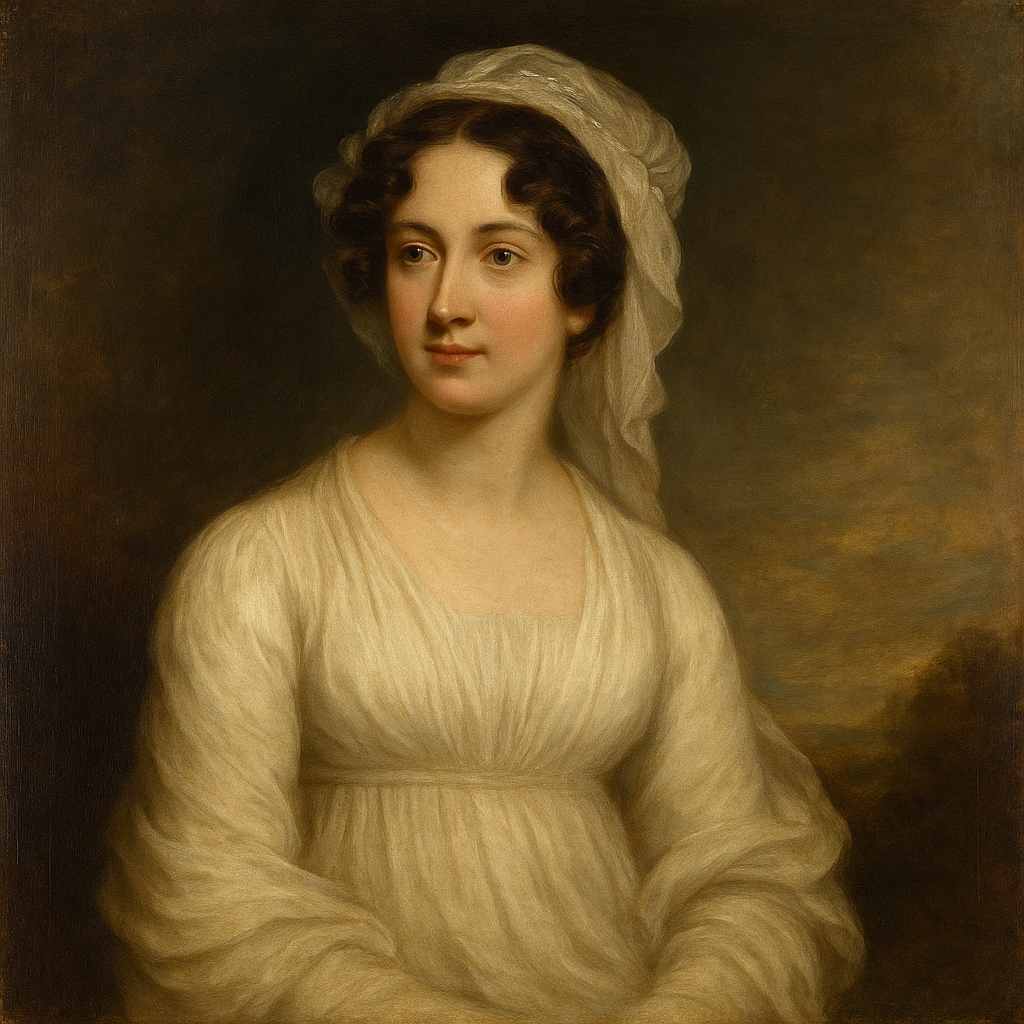5 Poems by Felicia Dorothea Hemans
1793 - 1835
Felicia Dorothea Hemans Biography
Felicia Dorothea Hemans, born in Liverpool, England, on September 25, 1793, emerged as one of the most influential and widely read poets of the early 19th century. Her life and work offer a compelling study in the intersection of Romanticism, domesticity, and the evolving role of women in literary culture during a time of significant social and political change.
The fifth of seven children born to George Browne, a merchant, and Felicity Wagner Browne, young Felicia showed remarkable intellectual promise from an early age. Her mother, recognizing her daughter's precocity, encouraged her literary pursuits. This early support proved crucial in fostering Hemans' poetic talents, which would soon blossom into a prolific career spanning over three decades.
Hemans' childhood was marked by upheaval when, in 1800, her father's business failures forced the family to relocate to Wales. This move, though initially disruptive, would profoundly influence her poetic sensibilities. The rugged Welsh landscape, steeped in history and legend, provided a rich tapestry of imagery and themes that would permeate much of her later work. It was during these formative years in Wales that Hemans began to seriously pursue her poetic craft, publishing her first collection, "Poems," in 1808 at the tender age of fourteen.
The young poet's early work caught the attention of Percy Bysshe Shelley, who initiated a brief correspondence with her. This early recognition from such an esteemed figure in the Romantic movement undoubtedly bolstered Hemans' confidence and ambition. Her subsequent collections, including "The Domestic Affections" (1812), began to garner wider critical acclaim and established her as a rising star in the literary firmament.
In 1812, at the age of nineteen, Hemans married Captain Alfred Hemans. The union, which produced five sons, was not a happy one. Captain Hemans left for Italy in 1818, never to return, leaving Felicia to raise their children alone. This personal turmoil, combined with the responsibilities of single motherhood, would come to shape much of Hemans' mature work, infusing it with themes of domestic life, maternal love, and the complexities of female experience.
Despite the challenges of her personal life, or perhaps because of them, Hemans' literary output during this period was prodigious. She published numerous collections throughout the 1820s, including "The Forest Sanctuary" (1825) and "Records of Woman" (1828), which are widely considered her masterpieces. These works showcased Hemans' evolving poetic voice, characterized by its musicality, emotional depth, and keen attention to historical and cultural detail.
Hemans' poetry often explored the tension between public and private spheres, a preoccupation that reflected her own struggles to balance her roles as a mother and a professional writer. Her work frequently centered on heroic women from history and literature, reimagining their stories through a lens that emphasized their inner lives and emotional experiences. This focus on female subjectivity was groundbreaking for its time and has led many modern scholars to view Hemans as an important precursor to feminist literary traditions.
One of Hemans' most enduring works, "Casabianca" (1826), better known by its opening line "The boy stood on the burning deck," exemplifies her ability to craft memorable, emotionally resonant verse that captured the public imagination. The poem's exploration of themes of duty, sacrifice, and filial devotion struck a chord with Victorian sensibilities and ensured its place in the popular canon for generations.
Hemans' popularity during her lifetime was remarkable. Her works were widely read and admired on both sides of the Atlantic, with American editions of her poetry often appearing simultaneously with their British counterparts. This transatlantic appeal contributed to her significant influence on American poetry, particularly on writers such as Henry Wadsworth Longfellow, who openly acknowledged his debt to her work.
Despite her commercial success and critical acclaim, Hemans' later years were marked by ill health and increasing isolation. She moved to Dublin in 1831 to be near her brother, and it was there that she produced some of her most introspective and spiritually oriented poetry. Works like "Scenes and Hymns of Life" (1834) reflect a deepening religious sensibility and a preoccupation with mortality that would characterize her final years.
Felicia Hemans died on May 16, 1835, at the age of 41, leaving behind a vast body of work that would continue to influence literary tastes and poetic practices well into the Victorian era. In the years following her death, her reputation underwent significant fluctuations. Initially celebrated as the epitome of feminine sensibility and domestic virtue, Hemans' work fell out of favor in the early 20th century, dismissed by some critics as overly sentimental and conventional.
However, recent decades have seen a resurgence of interest in Hemans' poetry, spurred by feminist and historicist approaches to literary scholarship. Modern critics have reevaluated her work, recognizing its complexity, technical sophistication, and nuanced engagement with the social and political issues of her time. Hemans' exploration of national identity, her interrogation of gender roles, and her skillful manipulation of poetic form have all come under renewed appreciation.
Today, Felicia Dorothea Hemans is recognized as a key figure in the transition between Romanticism and Victorianism, a poet whose work bridges the gap between the revolutionary fervor of the early Romantics and the moral earnestness of the Victorian age. Her life and work continue to offer rich material for scholarly investigation, shedding light on the complexities of women's writing in the 19th century and the enduring power of poetry to capture the human experience in all its varied forms.
This text was generated by AI and is for reference only. Learn more
Username Information
No username is open
Everything is free to use, but donations are always appreciated.
Quick Links
© 2024-2025 R.I.Chalmers (V2Melody).

All music on this site by R.I.Chalmers (V2Melody) is licensed under a Creative Commons Attribution-NonCommercial 4.0 International License.
Attribution Requirement:
When using this music, you must give appropriate credit by including the following statement (or equivalent) wherever the music is used or credited:
"Music by R.I.Chalmers (V2Melody) – https://v2melody.com"
Support My Work:
If you enjoy this music and would like to support future creations, your thanks are always welcome but never required.
Thanks!






